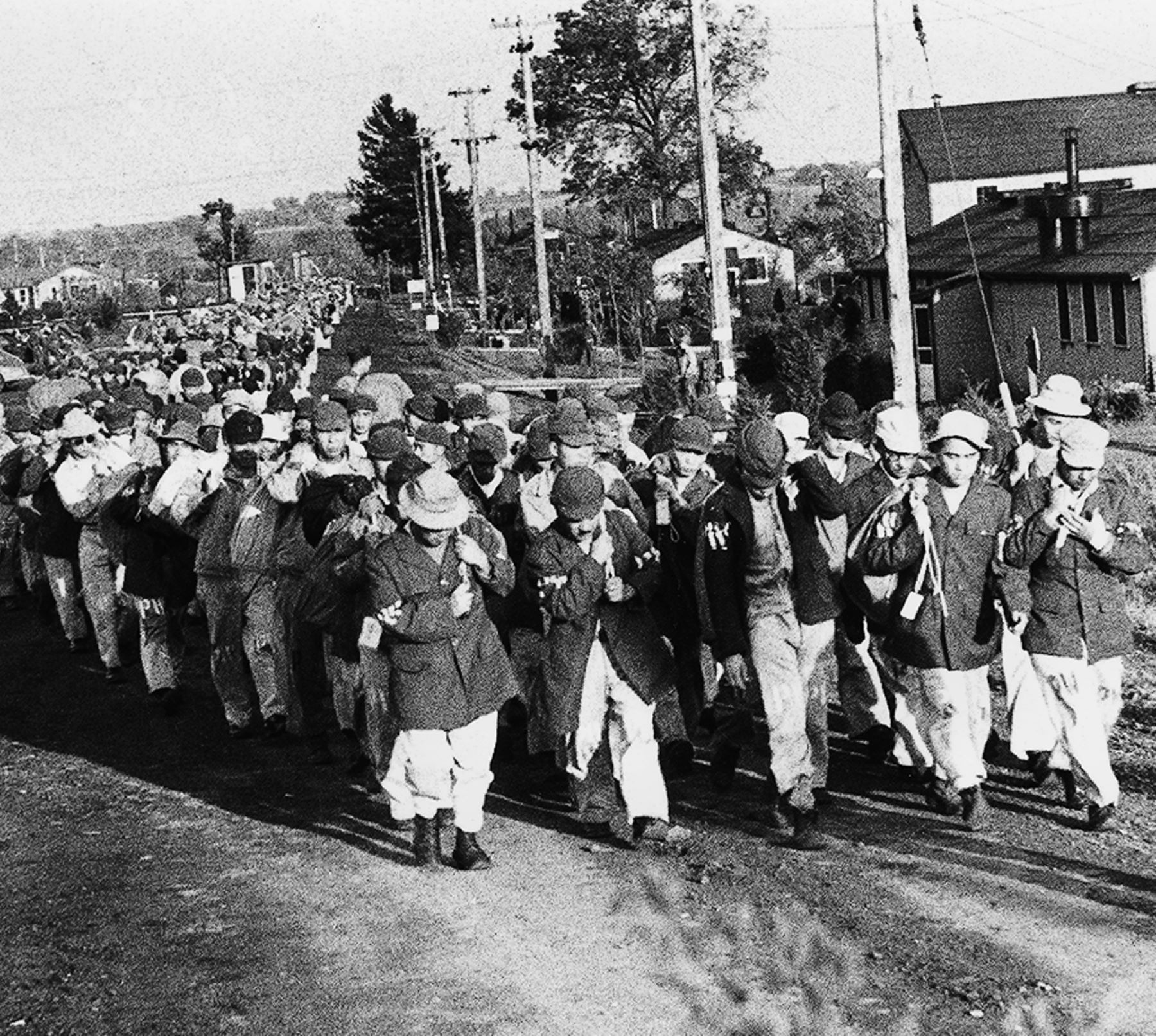
World War II Japanese prisoners from Camp Clarinda march to the train carrying their personal belongings in bags on Oct. 7, 1945. Photo courtesy of Nodaway Valley History Museum
Nov/Dec 2023 (Volume 15, Issue 6)
By Don Doxsie
When thousands of captured enemy soldiers began to be transported to prisoner camps in Iowa during World War II, it created an unusual dynamic.
Captured German and Italian soldiers were detained at major camps near Algona and Clarinda in January 1944 and also at a few dozen smaller branch camps scattered around the state. Many of those prisoners were not radically different than the citizens of the communities into which they were placed. They had a similar heritage, ate similar food, led their lives in similar ways and worshipped similar religions. As they mingled with U.S. military personnel and occasionally the locals, many of the harsh feelings against them softened.
“The American public was really kind of awestruck by the Germans,’’ said Dr. Arnold Krammer, a noted history professor at Texas A&M University. “They seemed so much like us.’’
When Japanese prisoners began arriving at Camp Clarinda early in 1945, it engendered radically different emotions.
The Japanese culture and way of life were totally foreign to the average Iowan. And unlike Germany and Italy, Japan had initiated a devious and highly destructive attack on the United States to precipitate the declaration of war. It was easy sometimes to forget that the Europeans were the enemy. Americans could never forget nor forgive Pearl Harbor.
There also were reports about the mistreatment of U.S. soldiers in Japanese POW camps. Of the 25,000 U.S. soldiers who were captured by Japan in the early stages of the war, 40 percent were dead within four years.
As author Linda Betsinger McCann noted in her 2018 book about the prisoner of war camps in Iowa, “The Clarinda community’s atmosphere and attitude toward the POW camp changed’’ when the Japanese prisoners arrived.
Prior to that, the general public’s feelings about Camp Clarinda were not radically different than they were regarding Camp Algona, nearly four hours to the north. Construction on the Clarinda facility began in the middle of the summer of 1943 and the first prisoners arrived on Jan. 25, 1944, when 250 German soldiers were transferred in from Camp Concordia in Kansas.
Camp Clarinda, constructed on 273 acres of farmland about a mile-and-a-half south of town, used the same template as about 150 other POW camps that popped up across the country. It had a double row of 10-foot chain link fences topped by barbed wire with guard dogs occasionally roaming the area between the fences. There were eight guard towers equipped with .30 caliber machine guns, 400-watt searchlights and sirens.
To ease the public’s fears about the security of the camp, an open house was held in early January 1944. Nearly 5,000 curious citizens — more than Clarinda’s total population at that time — turned out.
H.J. Morgan, the secretary of the Clarinda Chamber of Commerce, said his community readily welcomed the military personnel who served as guards at the camp. When 700 construction workers descended on the town to build the camp, many local residents opened their homes to house them.
A Des Moines Register reporter who toured the Clarinda camp after the first POWs arrived, noted that “The Germans are good looking, well fed, happy, friendly, energetic young fellows.’’
TO READ THE ENTIRE STORY AND OTHER FASCINATING STORIES ABOUT IOWA HISTORY, subscribe to Iowa History Journal.
